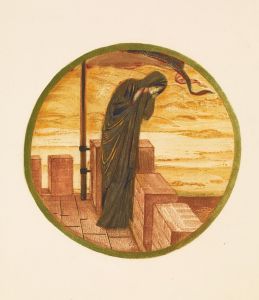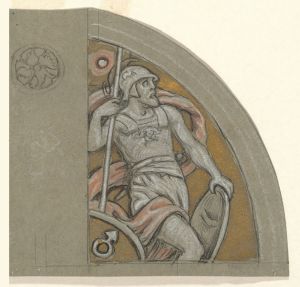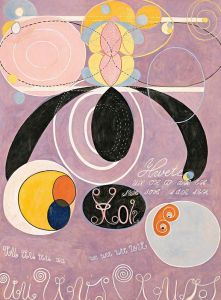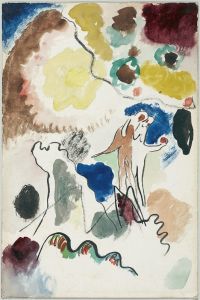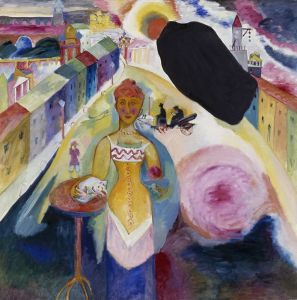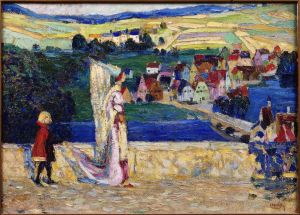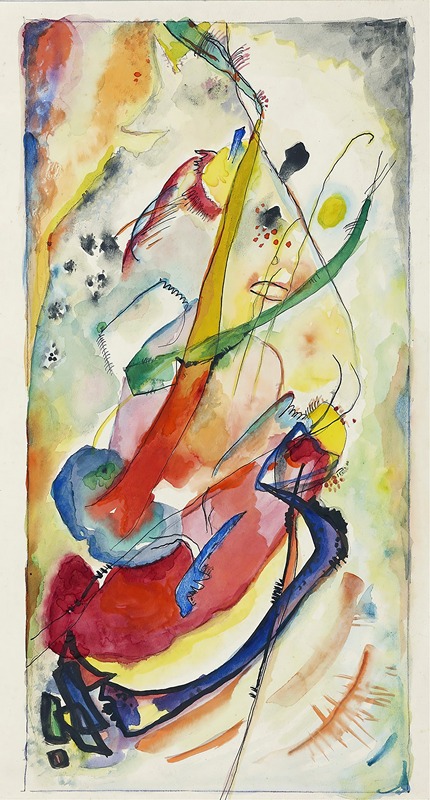
Entwurf zu einem Wandbild für Edwin R. Campbell Nr. 1
A hand-painted replica of Wassily Kandinsky’s masterpiece Entwurf zu einem Wandbild für Edwin R. Campbell Nr. 1, meticulously crafted by professional artists to capture the true essence of the original. Each piece is created with museum-quality canvas and rare mineral pigments, carefully painted by experienced artists with delicate brushstrokes and rich, layered colors to perfectly recreate the texture of the original artwork. Unlike machine-printed reproductions, this hand-painted version brings the painting to life, infused with the artist’s emotions and skill in every stroke. Whether for personal collection or home decoration, it instantly elevates the artistic atmosphere of any space.
Wassily Kandinsky's Entwurf zu einem Wandbild für Edwin R. Campbell Nr. 1 (translated as Design for a Mural for Edwin R. Campbell No. 1) is a work created by the Russian-born artist in 1914. Kandinsky, a pioneer of abstract art, was known for his innovative approach to color, form, and composition, and this piece reflects his mature style during a pivotal period in his career.
The painting was part of a series of works commissioned by Edwin R. Campbell, an American industrialist and founder of the Chevrolet Motor Company. Campbell was an art patron with a keen interest in modern art, and he commissioned Kandinsky to create four panels for his New York apartment. These panels, collectively referred to as the "Campbell Panels," were designed as decorative murals. Each panel was intended to evoke a specific emotional or atmospheric quality through Kandinsky's abstract visual language.
Entwurf zu einem Wandbild für Edwin R. Campbell Nr. 1 is characterized by its dynamic composition, vibrant colors, and interplay of geometric and organic forms. The work exemplifies Kandinsky's theories on the spiritual and emotional power of art, as outlined in his influential treatise Concerning the Spiritual in Art (1911). Kandinsky believed that abstract forms and colors could convey emotions and ideas more directly than representational art, and this philosophy is evident in the energetic and harmonious arrangement of shapes in this piece.
The Campbell Panels, including Nr. 1, are significant examples of Kandinsky's transition from his earlier, more figurative works to his fully abstract style. By 1914, Kandinsky had developed a visual vocabulary that relied on the interplay of line, shape, and color to create compositions that were independent of the physical world. This approach was groundbreaking at the time and helped establish Kandinsky as one of the leading figures of the abstract art movement.
Today, the Campbell Panels are considered important works in Kandinsky's oeuvre and in the history of modern art. They demonstrate his ability to synthesize artistic innovation with decorative function, bridging the gap between fine art and applied art. The panels are now housed in the Solomon R. Guggenheim Museum in New York, where they continue to be celebrated for their artistic and historical significance.





